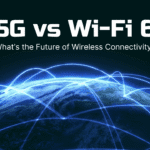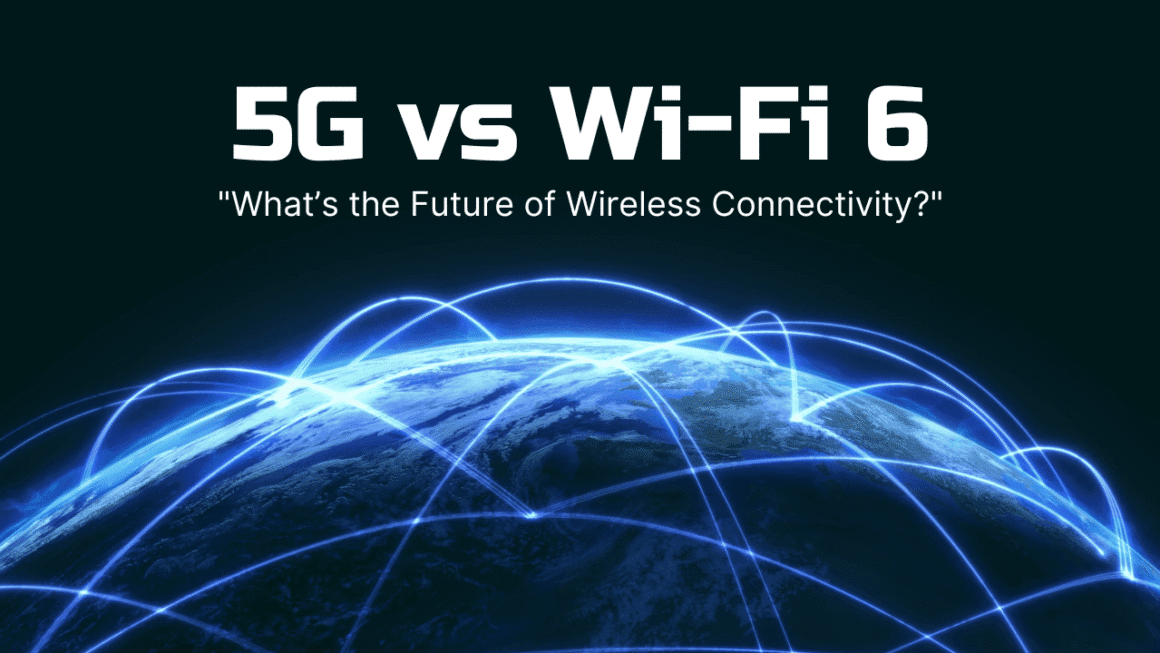The Internet of Things (IoT) has been growing rapidly in recent years, with billions of devices connected to the internet and exchanging data. However, the increasing number of devices and the amount of data being generated has led to challenges in terms of connectivity and network speed. This is where 5G networks come in. 5G promises to provide faster and more reliable connectivity, which could have a significant impact on the development and implementation of IoT applications. In this blog, we will explore the impact of 5G networks on the Internet of Things.
The Impact of 5G Networks on the Internet of Things: 5G networks offer a range of benefits that could enhance the functionality and effectiveness of IoT applications. These include:
Faster Speeds:
5G networks have the potential to offer significantly faster speeds than current 4G networks. This means that devices can transfer data more quickly, allowing for more efficient communication and faster decision-making.
Lower Latency:
Latency refers to the time it takes for data to travel between devices and the cloud. 5G networks offer much lower latency than 4G networks, meaning that data can be processed and analyzed more quickly. This is particularly important for applications that require real-time data analysis, such as autonomous vehicles or remote surgeries.
Increased Capacity:
5G networks can handle a much larger number of devices than 4G networks. This means that IoT devices can connect to the network more easily and without congestion. This is particularly important in dense urban environments where there are large numbers of IoT devices.
Improved Energy Efficiency:
5G networks are more energy-efficient than 4G networks. This means that IoT devices can operate for longer periods without needing to be charged, reducing costs and improving the user experience.
Enhanced Security:
5G networks offer greater security than 4G networks, with more advanced encryption and authentication methods. This is particularly important for IoT applications that handle sensitive data, such as medical devices or financial transactions.
The combination of these benefits makes 5G networks an ideal platform for the development and implementation of IoT applications. For example, in the healthcare industry, 5G-enabled IoT devices could be used to monitor patient health in real-time, allowing doctors to make more informed decisions and provide better care. In the manufacturing industry, 5G-enabled IoT devices could be used to monitor and optimize production processes, reducing costs and improving efficiency.
The benefits of 5G networks for IoT have already been demonstrated in various industries. For example, in the transportation industry, 5G-enabled IoT devices can be used to monitor and optimize traffic flow in real-time. This could reduce congestion, improve safety, and save time for drivers. Additionally, 5G networks can support the development of autonomous vehicles, which require real-time data exchange and low latency connections to operate safely.
In the agriculture industry, 5G-enabled IoT devices can be used to monitor soil conditions, weather patterns, and crop growth, allowing farmers to optimize their operations and increase yields. The use of IoT sensors and 5G connectivity can also help farmers to reduce water usage, fertilizers, and pesticides, leading to more sustainable farming practices.
Moreover, the deployment of 5G networks and IoT devices can benefit the public sector, particularly in the areas of public safety and emergency response. For instance, 5G-enabled IoT devices can be used to detect natural disasters such as floods, earthquakes, or hurricanes, and alert authorities in real-time. This can enable faster response times and save lives. In addition, 5G networks can support the development of smart cities, where connected devices can be used to manage traffic, energy, waste, and other aspects of urban life.
However, there are also some challenges associated with the deployment of 5G networks and IoT devices. One of the main challenges is the cost of infrastructure deployment, which can be significant. Building out a 5G network requires significant investments in infrastructure, such as new cell towers, fiber optic cables, and other networking equipment. The deployment of IoT devices also requires additional costs for device procurement, installation, and maintenance.
Another challenge is the security and privacy risks associated with IoT devices. The increasing number of connected devices and the amount of data they generate can create vulnerabilities that hackers can exploit. Therefore, it is essential to implement strong security measures, such as encryption, authentication, and access controls, to ensure the safety and privacy of IoT devices and their users.
Conclusion:
The impact of 5G networks on the Internet of Things is significant and far-reaching. The combination of faster speeds, lower latency, increased capacity, improved energy efficiency, and enhanced security offered by 5G networks makes it an ideal platform for the development and implementation of IoT applications. The deployment of 5G networks and IoT devices can bring significant benefits to various industries, including transportation, agriculture, and public safety, among others. However, it is essential to address the challenges associated with the deployment of 5G networks and IoT devices, such as infrastructure costs and security risks, to ensure the safety, privacy, and efficiency of IoT applications. As the deployment of 5G networks continues to expand globally, we can expect to see an increase in innovative IoT applications that will transform the way we live, work, and interact with the world around us.














